Burning Man 2014 Pt 2. My Chosen Gear {Nuts & Bolts}
Welcome to my blog post series chronicling Burning Man 2014! This post I will focus on sharing insight into my chosen gear and why it’s important to my work. If you are just joining us, click below to catch up on the 7-part series starting with:
Part 1. Burning Man Photo Preview {Principles}
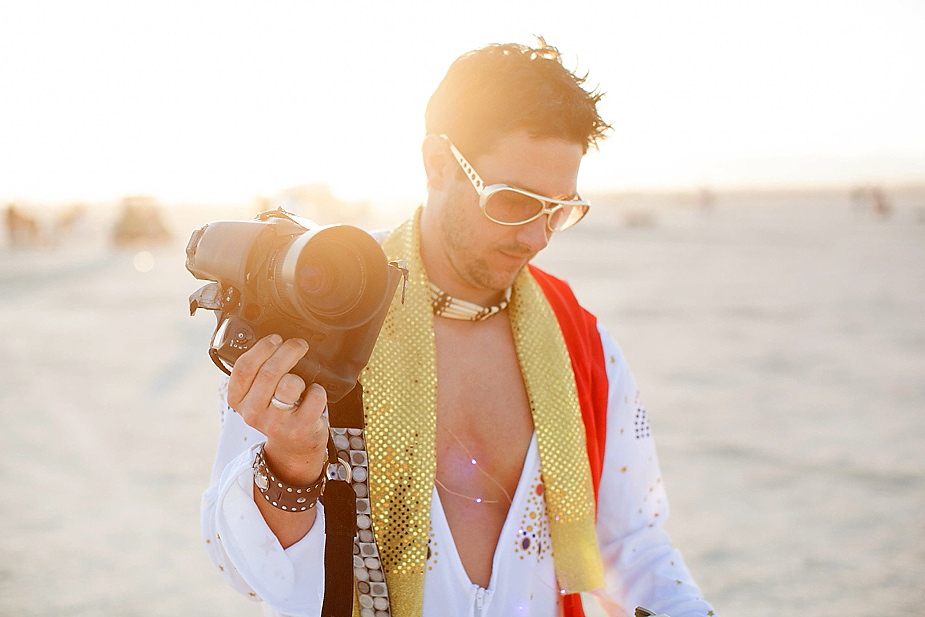
Elvis the Burning Man Photographer? Nope, that’s me! When the bride wears white, guests would never dress in white. When the bride wears all black, you must wear white like Elvis. This type of forward thinking, a bit different, and always genuine is what drives me to year-round… and return to the Burning Man for an added dose of inspiration (Photo by Ashley Douthit).
Logistics is the name of the game when it taking photos at Burning Man, or for any personal photography project. Knowing your gear better than the manual, is 50% of the art. What remains is knowing how to use it in intense heat, nearly blind from the sun, perhaps sleep deprived or inebriated from the night before, yet hyped on adrenaline and excitement like a virgin roller coaster experience. That’s the other 50% of art making.
This year I was proud to be apart of the 2014 Burning Man Doc-Team, responsible for documentary the art and people of Burning Man… a huge honor to be chosen as a photographer among 66,000 creatives.
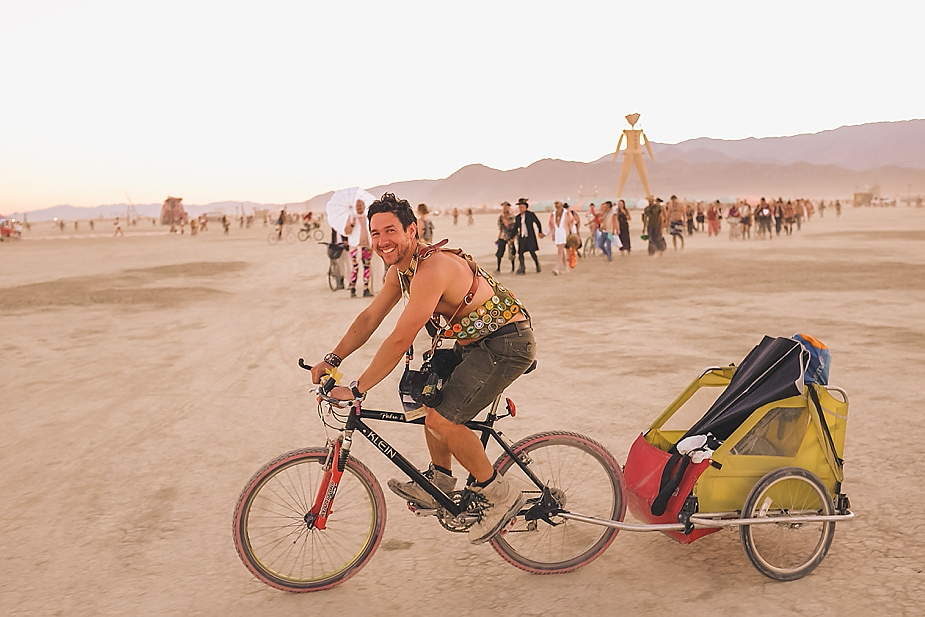
Photo by my long-time friend, first time Burning Man compadre, Matt Steaffens. This is the third time my college favorite Klein Pulse 2 mountain bike has been to Burning Man. Speaking of Matt, here we are!
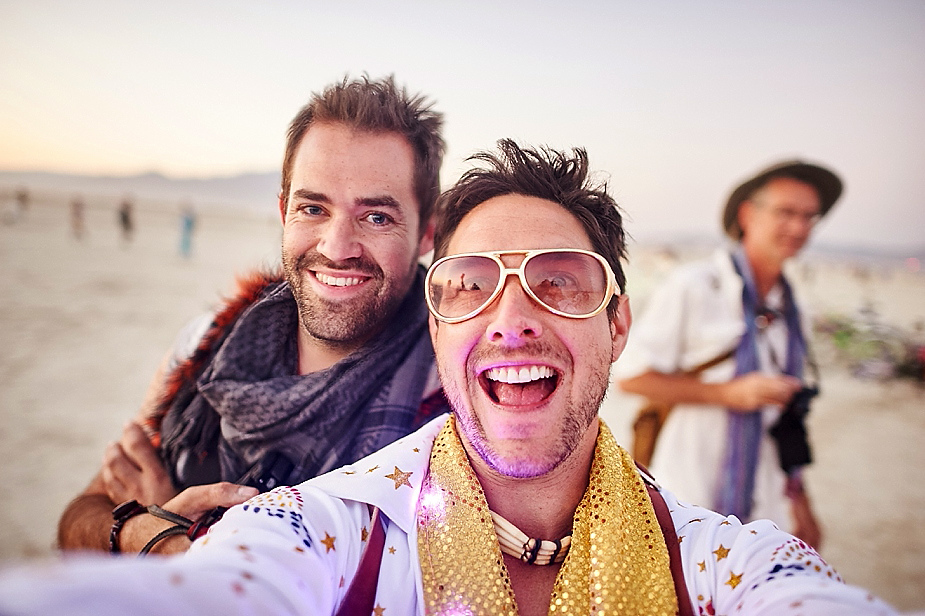
It’s taken me three year to lock in the tools I need to bring to the playa. Like writing a Master’s thesis, if you take your job seriously it’s a worthwhile time investment. Lots of research, testing, and investing. One thing matters upon return: the final print.
Missing camera focus is one thing. Missing project focus is another. Which is why my first big step in thinking about my photo projects from 2010, 2012, and 2014 involve thinking big picture: creating portraits of couples and families in love on the playa. That’s the big vision, as that’s what I do in the real world, full-time: yes, I shoot weddings and like it. Families and portrait, too. I like connecting with people, making them feel their best, and sharing with them a creative mirror of how I see them. It’s what I do.
More people at Burning Man take more photos than ever before… and nothing is done with them. Some deleted, lost, most forgotten. Yet I have a vision that one day my work of personal work will hang on a gallery wall or in a book as a product I’m proud to share as a cohesive body of work stemming time. Intent and ‘happy mistakes’ serve as cornerstones to my art. Intent takes planning, yet it is important to being open to things when they don’t go as planned.. that is what makes art real. To do this in a place like Burning Man is nearly impossible without gaining permission in advance. To do so, and sell work commercially, is a cardinal sin as a participant at Burning Man. Says so on the ticket. Which is why the most important pieces of gear I bring the the playa:
- A creative brain. Chances are if you are a participant, you’ve got something to share with the world. It could be a joke, a yoga pose, or hug. A DJ set, an art car, or grantee installation. Your brain drives the energy for the project. But you have to have a project to start with. Otherwise you end with what happens to 95% of images taken an a mobile device: a worthless, meaningless, soulessless cloud of binary information called picture elements (pixels) aka ‘data.’ Data isn’t art.
- A camera worth taking. Burning Man iphoneography is like fast food. Quick and easy, not as savory to become a gallery print… still priceless images upon return as long as they are given the care they deserve (print your images, back-up your shit). Yet the expensive camera left at home, confined from a dust-free zone without adventure (think: toys that never get taken out of their boxes). I bring my best stuff to use it, share the results. That’s part of my art (and a good thing for insurance, too).
- A support system. This is the most important piece of gear you’ll need. Just don’t treat people like tools. They will welcome you home when you return: a loved one, family, or best friend. Or the amazing set of friends in your established camp (I love my camp, FREAKS… love them all). They will be the ones helping you to the emergency room if you are severely dehydrated. Or handing you a bacon-club sandwich after a hard days work, with a cold beer. Or helping you hold a lighstand or offer a charge to your batteries. Or answer plaguing questions like “Do I make good art?” or “can I borrow some toilet paper?” Your support system will make you laugh and cry. Above all, they will help you to humanize your experience, which I think everyone who goes through a radical experience needs a bit of decompression to process. They will be there when you come home, unconditionally. Our camp has has a lovely Facebook group page I check weekly and it helps make the winter doldrums pass. Your support system will last, won’t depreciate like a camera, and will still make you laugh about “that one time at Burning Man.” Life is made of stories like these.
- A bike. Walking long distances in the sun with gear sucks.
Ok. Done with the ethereal elevator spiel everyone likes to hear. Important I share this given my audience. Time for nuts and bolts. This is stuff you really need, or I chose to bring to do my best work:
- A DSLR camera I love. It’s five-years old, a dinosaur in tech years. Yet I can program the thing in dark, while riding in a bouncing art car, with an English gal asking me why I’m wearing a scout uniform (another story). Mine just so happens to be not one, but two Nikon D700s, each with a lens. This primarily served as my backup gear when lighting was low and I was capturing photojournalistic moments.
- Bad ass lenses. This is the only eye your camera sees. Make it good. I only brought a 24mm f/1.4 and 85mm f/1.4, my two desert island lenses. I can crank the ISO and shoot without a flash and stop motion. and I can isolate depth of field if I choose to help make my subject shine. It’s all about using reliable gear I can trust to deliver on what I expect, no matter what.
- Lighting gear. I shoot with what most people don’t bring. It helps me distinguish my images. I used the Broncolor Move 1200 pack with one head and a 69” Elinchrom Octabank with a custom adapter I made to marriage to the two together, happily (took a trip to a machine shop).
- Medium-format digital camera system. I buried this one deep for all the haters. Renting one for a week is cheaper than a trip to Vegas. 60-megapixels gives you freedom to crop and 16-bit per color channel offers freedom to push creative processing. Shooting at ISO 50 always me to shoot at shallower depth of fields and still over power ambient light with a strobe 2 or 3 stops (even with large diffuser).
For extra credit:
- Gaffer tape rules. I seal up camera equipment with thin strips of gaffer tape. Not only does is peel off without sticky reside, but it protects the gear from dust. Also it covers up name brands on cameras which don’t matter, deterring thieves and egoists. Camera brands don’t matter on the playa, but dusty cameras can lead to trouble upon returning to humid climates when moisture marries alkaline dust and electronics (they don’t play well).
- Tripods make life easier back home, especially when compositing images. More importanty, however, it goes when shooting smaller depth of field and nailing critical focus.. especially when a group portrait including me is about to happen. If I can lock down the rig, nail focus, it gives me one less thing to worry about… critical when shooting with uber shallow depth of field of medium format. I left my tripod at home for this shoot, but a friend lent me his for this group shot.
Peace sign in the long drive in… it took 10 hours from Reno to Burning Man on the Sunday prior. And we JUST BARELY MISSED the weather closing of the gate by about 25 minutes. WHEW!
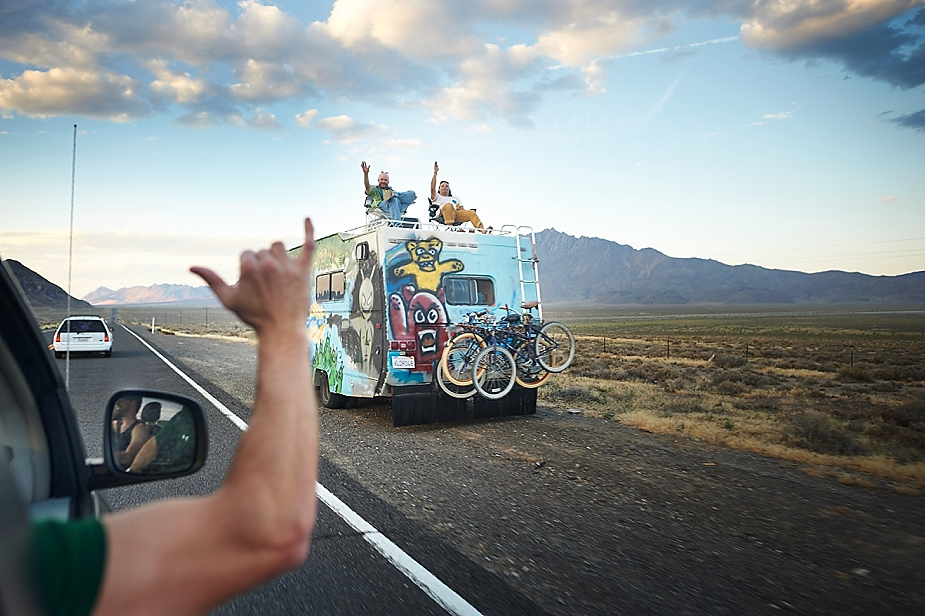
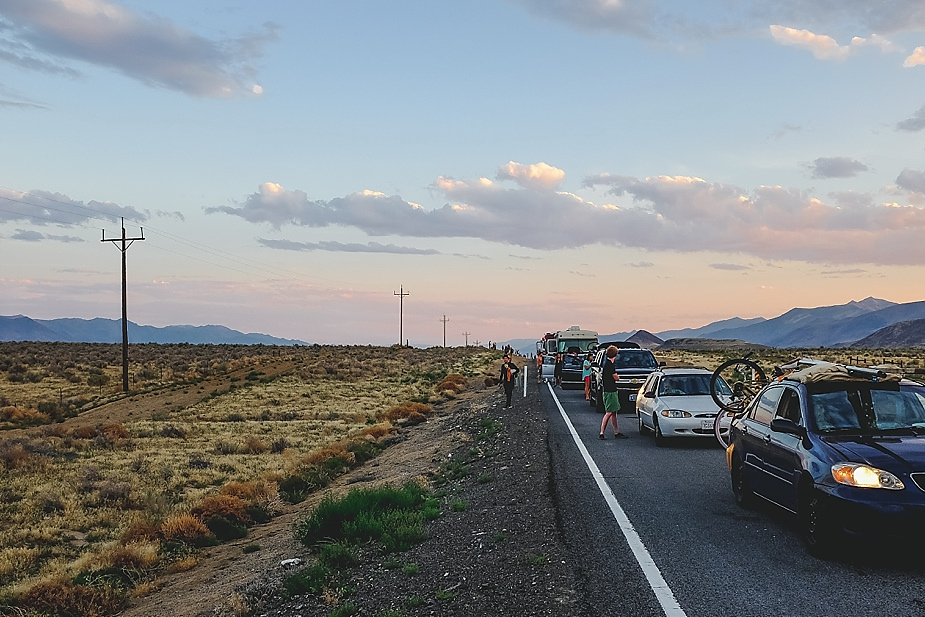
Elvis needs logistics handled smoothly. When a bride where black, wedding guests wear white (or dress as Elvis):
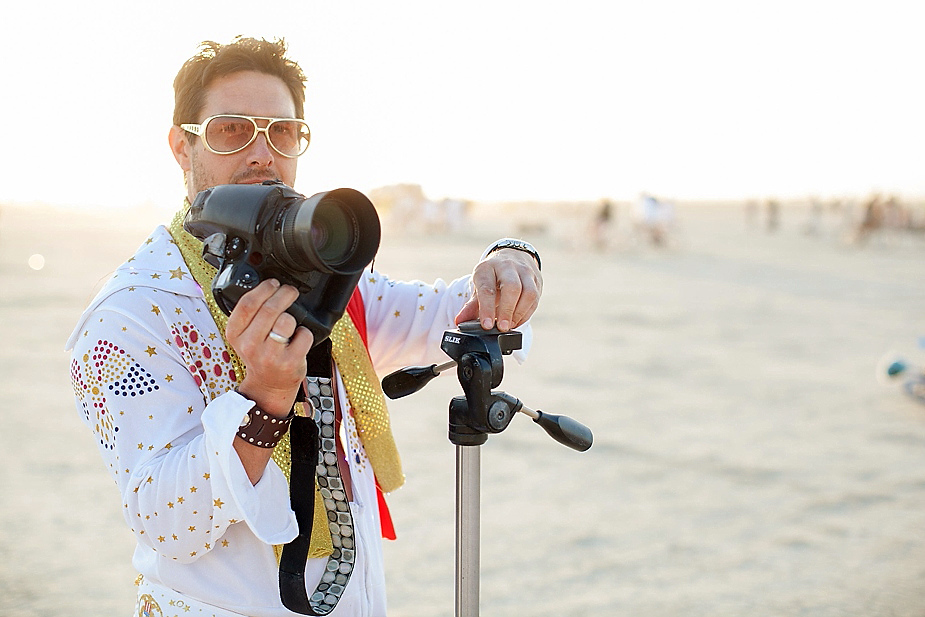
Photo by Ashley Douthit.
My inner circle in our final photo together before we left the playa in 2014, with plans to return.
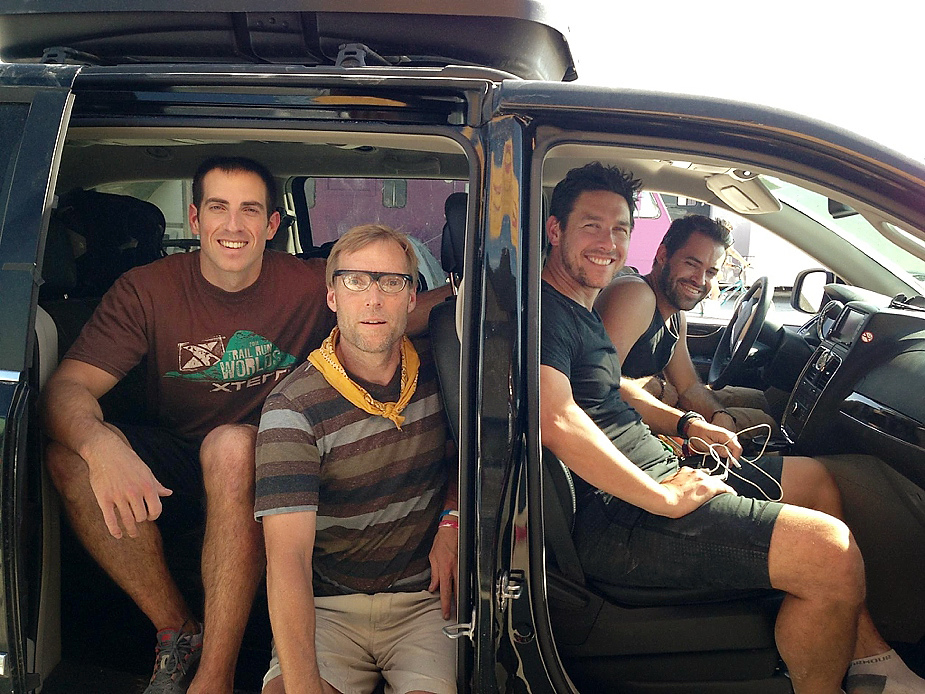
Click here to read part 3 of the series: Cherie & Hedley’s sunrise wedding on the playa.






Pingback: Burning Man 2014 Pt 4: Matty & Patrick {Playa Wedding} - Kern-Photo - Kern-Photo
Pingback: Emma & Adam {Boston Lifestyle Shoot} - Kern-Photo - Kern-Photo
Pingback: Burning Man 2014 Pt 1. Burning Man Photo Preview {Principles} - Kern-Photo - Kern-Photo
Pingback: Burning Man 2014 Pt 3. Cherie & Hedley {Sunrise Wedding} - Kern-Photo - Kern-Photo
Pingback: BM 2014 Pt 5. Personal Experiences - Kern-Photo - Kern-Photo
Pingback: BM 2014 Pt 6. Art & Camps - Kern-Photo - Kern-Photo
Pingback: BM 2014 Pt 7. Couples in Love - Kern-Photo - Kern-Photo
Pingback: COUPLES IN LOVE AT BURNING MAN 2014 Portraits by R.J. Kern | hedomag